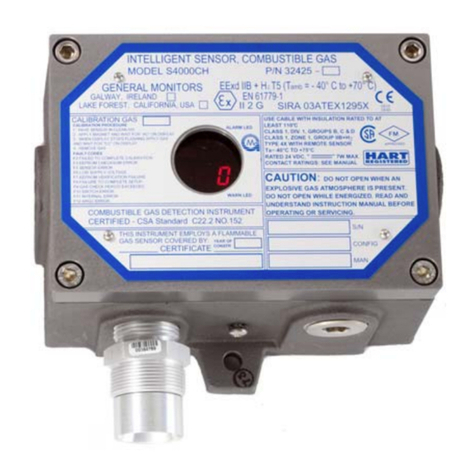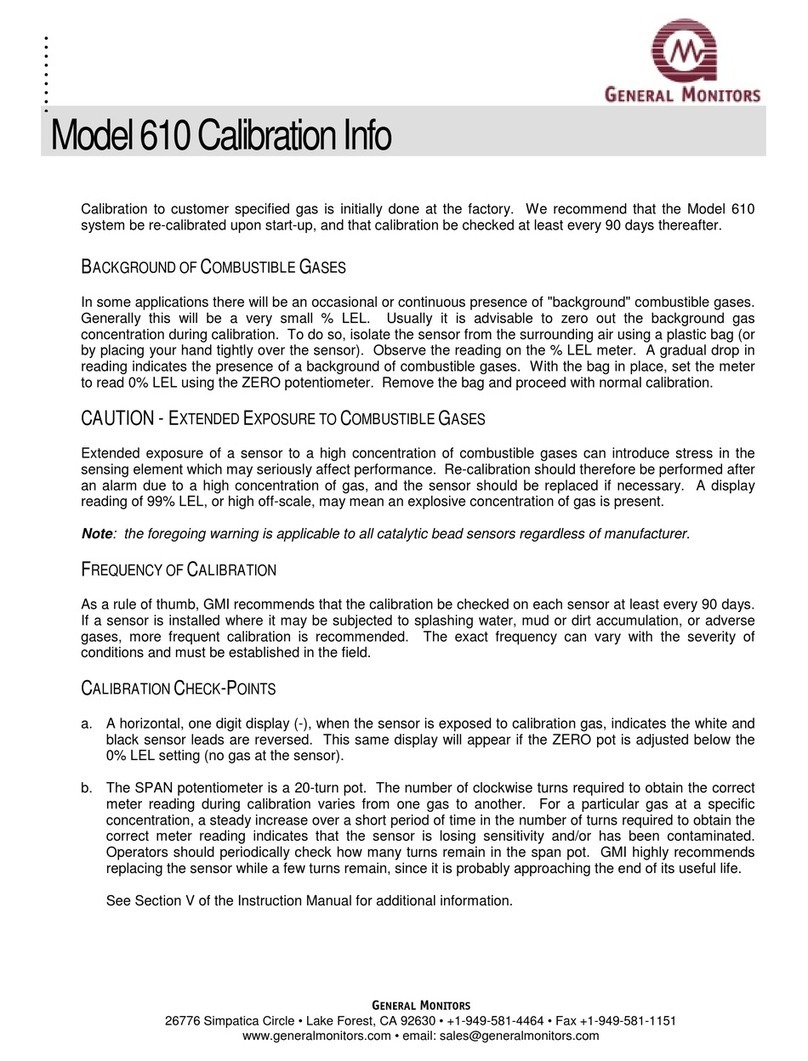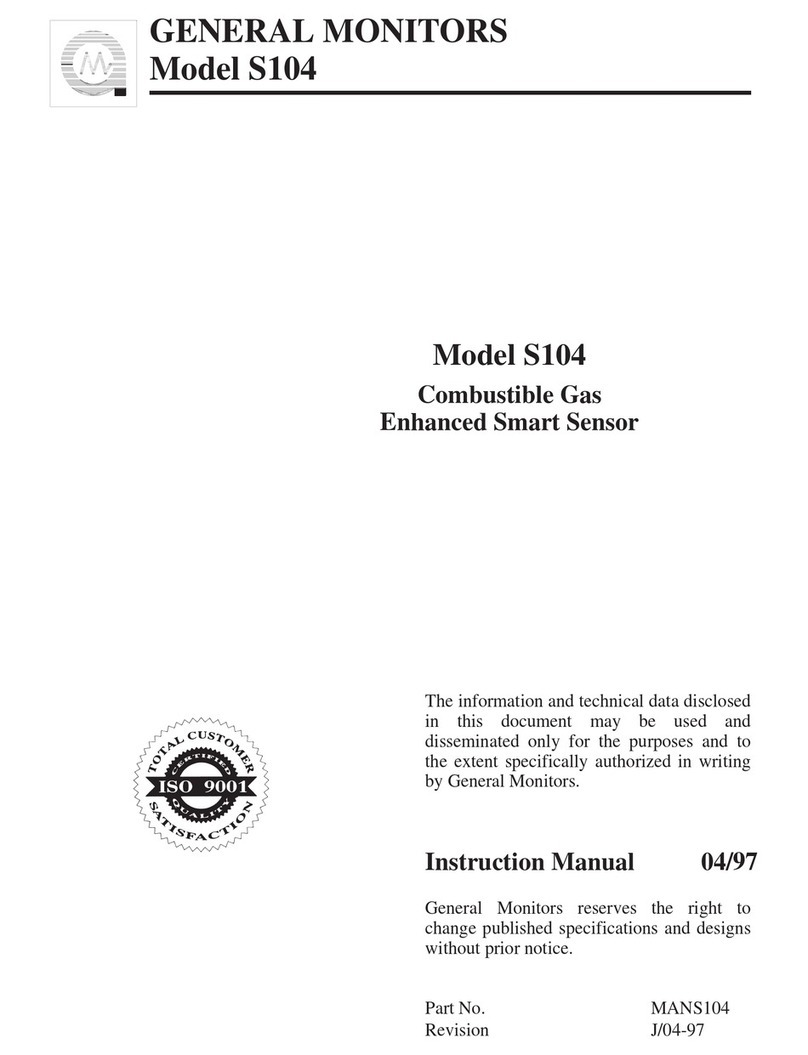
WARRANTY STATEMENT
General Monitors warrants the Model S214
to be free from defects in workmanship or
material under normal use and service within
two (2) years from the date of shipment.
General Monitors will repair or replace
without charge any equipment found to be
defective during the warranty period. Full
determination of the nature of, and
responsibility for, defective or damaged
equipment will be made by General Monitors’
personnel. Defective or damaged equipment
must be shipped prepaid to General Monitors’
plant or the representative from which
shipment was made. In all cases this
warranty is limited to the cost of the
equipment supplied by General Monitors.
The customer will assume all liability for the
misuse of this equipment by its employees or
other personnel. All warranties are
contingent upon proper use in the application
for which the product was intended and do
not cover products which have been modified
or repaired without General Monitors’
approval or which have been subjected to
neglect, accident, improper installation or
application, or on which the original
identification marks have been removed or
altered. Except for the express warranty
stated above, General Monitors disclaims all
warranties with regard to the products sold,
including all implied warranties of
merchantability and fitness and the express
warranties stated herein are in lieu of all
obligations or liabilities on the part of General
Monitors for damages including, but not
limited to, consequential damages arising out
of/or in connection with the use or
performance of the product.
WARNINGS
lHYDROGEN SULFIDE GAS IS AN
EXTREMELY TOXIC GAS, AND
EXPOSURE MAY RESULT IN A LOSS
OF CONSCIOUSNESS OR DEATH.
lThe Model S214 Hydrogen Sulfide Gas
Smart Sensor assembly contains
components which can be damaged by
static electricity. Special care must be
taken when wiring the system to ensure
that only the connection points are
touched.
lIMPORTANT: Each H2S sensor
is shipped with a red plastic cap
fitted over the sensor head.
Inside the cap is a desiccant.
DO NOT remove this cap until
you are ready to power the
system. SAVE the cap and
RE-CAP the sensor anytime the
system power is off for more
than an hour.
i
Model S214




























